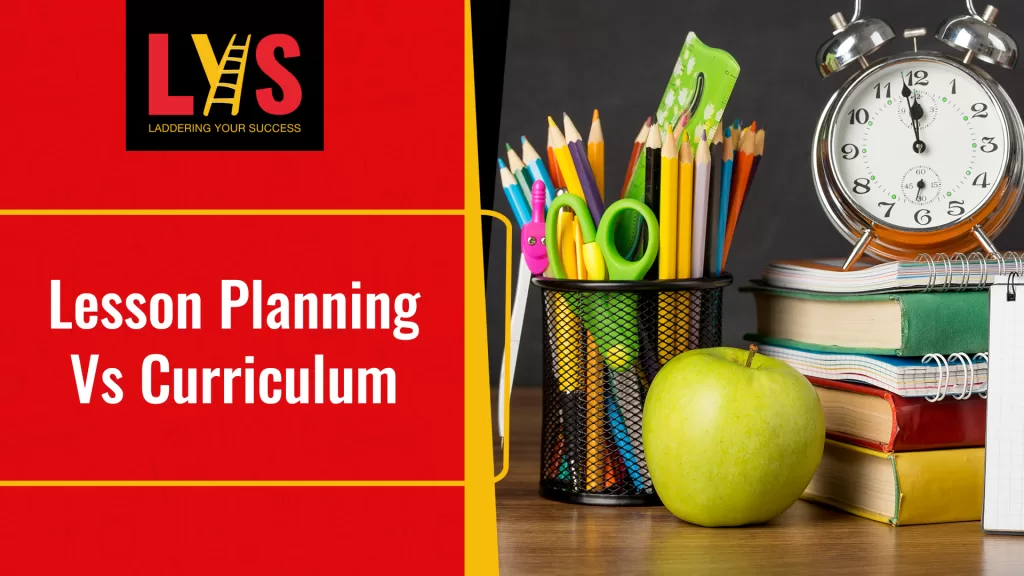Lesson planning and curriculum development are two critical components of the education system that are often used interchangeably but are different. In this blog post, we will explore the differences between lesson planning and curriculum and how they can be used to improve student achievement.
Lesson planning is designing a specific lesson for a class of students. A lesson plan is a detailed outline of what will be taught in class, including the objectives, materials, and activities. It is a tool that teachers use to ensure that their lessons are well-organized, engaging, and aligned with state standards. In Texas, the state standards are TEKS (Texas Essential Knowledge and Skills), a set of guidelines that dictate what should be taught in each grade level and subject.
Modified curriculum, on the other hand, is a more comprehensive approach to designing lessons and is often used by school districts and states. It involves taking the state standards and creating a curriculum tailored to the needs of the students in a specific district, school, class, or even a single student. This can include adjusting the pacing of the curriculum, adding or removing certain content, and incorporating differentiated learning strategies.
Differentiated learning is a teaching method that recognizes that students have different learning styles and abilities and involves adapting the curriculum to meet the needs of each student. This can include providing multiple ways for students to learn the same material, such as through hands-on activities, visual aids, or group work.
One of the main differences between lesson planning and curriculum is the level of detail. Lesson planning focuses on a single class session, while the curriculum focuses on the school or district’s overall goals and objectives. The curriculum also considers the needs of the students and the community.
Another key difference is individual teachers or a team creates that lesson plans, while a specialized of educators develops the curriculum. This team may include administrators, veteran teachers, and curriculum specialists who work together to design a curriculum that is aligned with state standards and meets the needs of the students.
When it comes to student achievement, both lesson planning and curriculum are essential. A well-designed lesson plan ensures students are engaged and motivated to learn. In contrast, a carefully crafted curriculum can help ensure that students are learning the skills and knowledge they need to succeed. Also, most importantly, that the curriculum is delivered with efficacy and fidelity.
Differentiated learning strategies, like modified curriculum, can also significantly affect student achievement. By providing multiple ways for students to learn, teachers can ensure that all students have the opportunity to reach their full potential. This can be especially important for students who may have learning challenges or disabilities.
In conclusion, lesson planning and curriculum development are two essential components of the education system that are often used interchangeably but are different. Lesson planning is a tool that teachers use to ensure that their lessons are well-organized, engaging, and aligned with state standards. At the same time, curriculum development is a more comprehensive approach to designing lessons that consider the needs of the students and the community. Both lesson planning and curriculum development can play a role in improving student achievement. Still, it is essential to remember that each has its unique purpose and should be used with other strategies, like differentiated learning, to help students reach their full potential.
Creating lesson plans is easier with the LYS Classroom app. An LYS Teacher is at the forefront of implementing revolutionary lessons in the classroom that will ensure your students’ success by igniting their hopes and goals and preparing them for a successful life and career.
They empower their students through creative and imaginative lesson plans by incorporating decision-making tools, life skills, SEL, and hard/soft skills that students can use for a path of direction to pursue college and a variety of post-high school options.
The result is an LYS personal path of purpose based on students’ strengths and interests to pursue their passions after high school. Incorporating Character, SEL, and hard/soft skills into their lessons effortlessly using our Being, Know, Doing Methodology. Learn more about LYS Classroom App by visiting our website.









